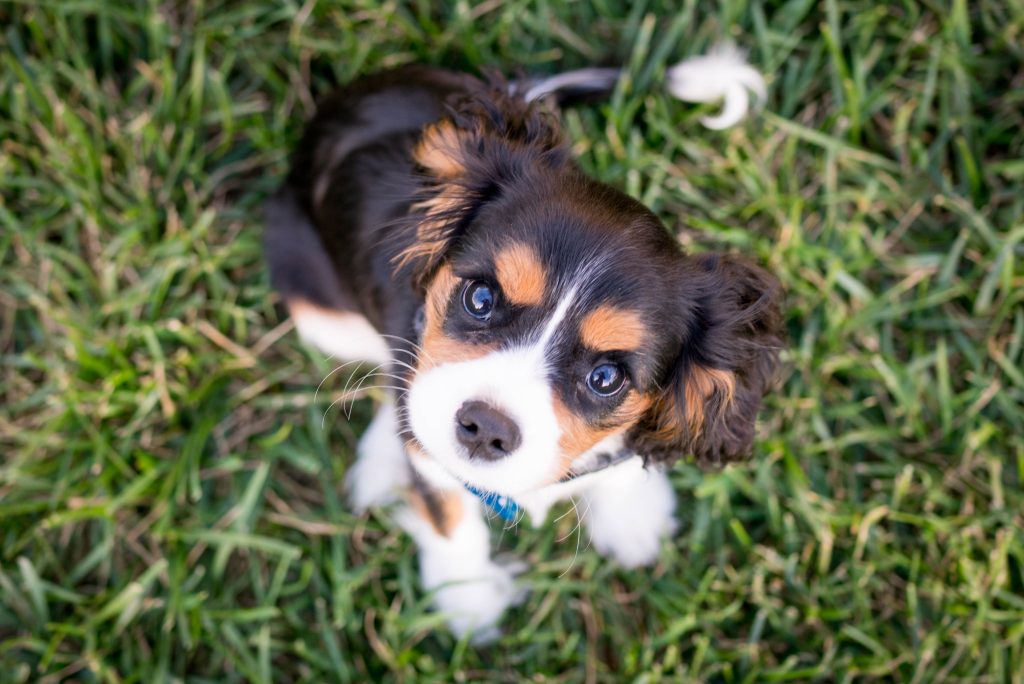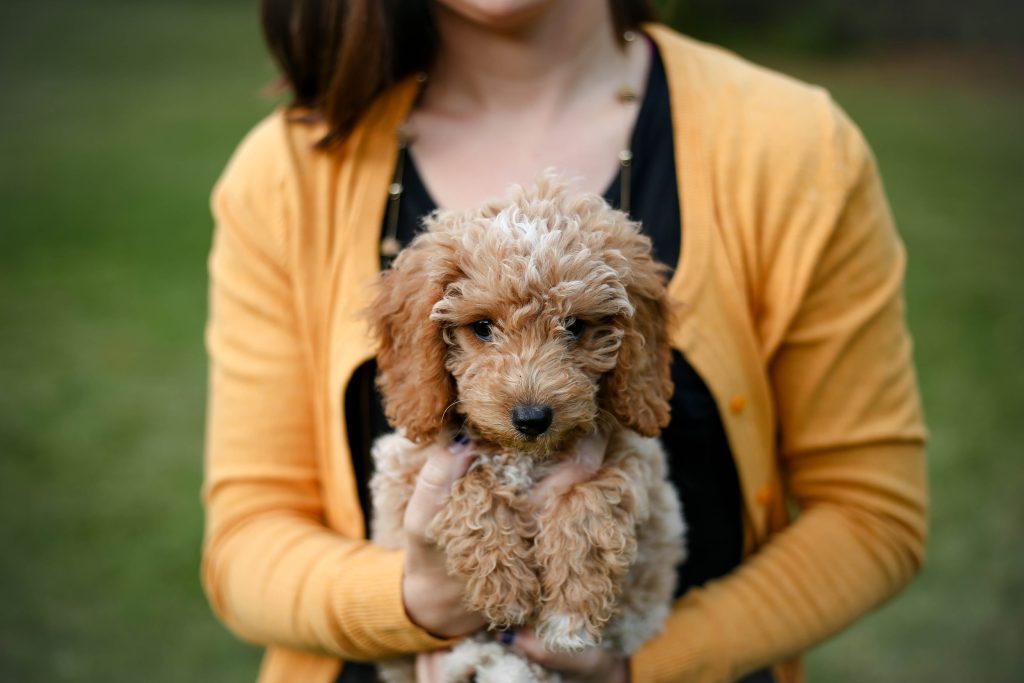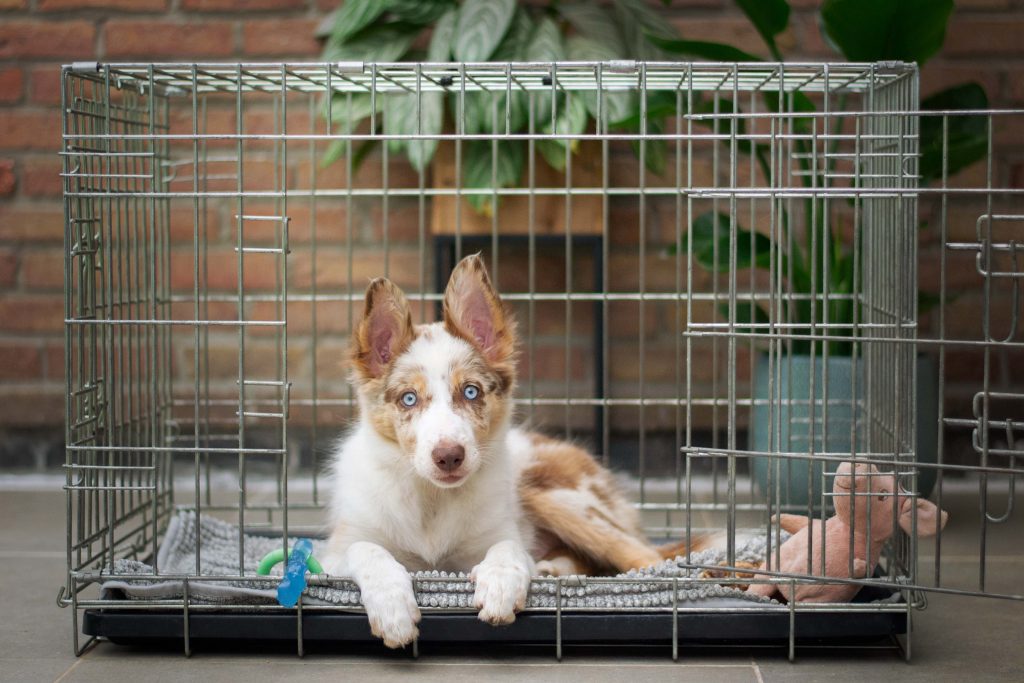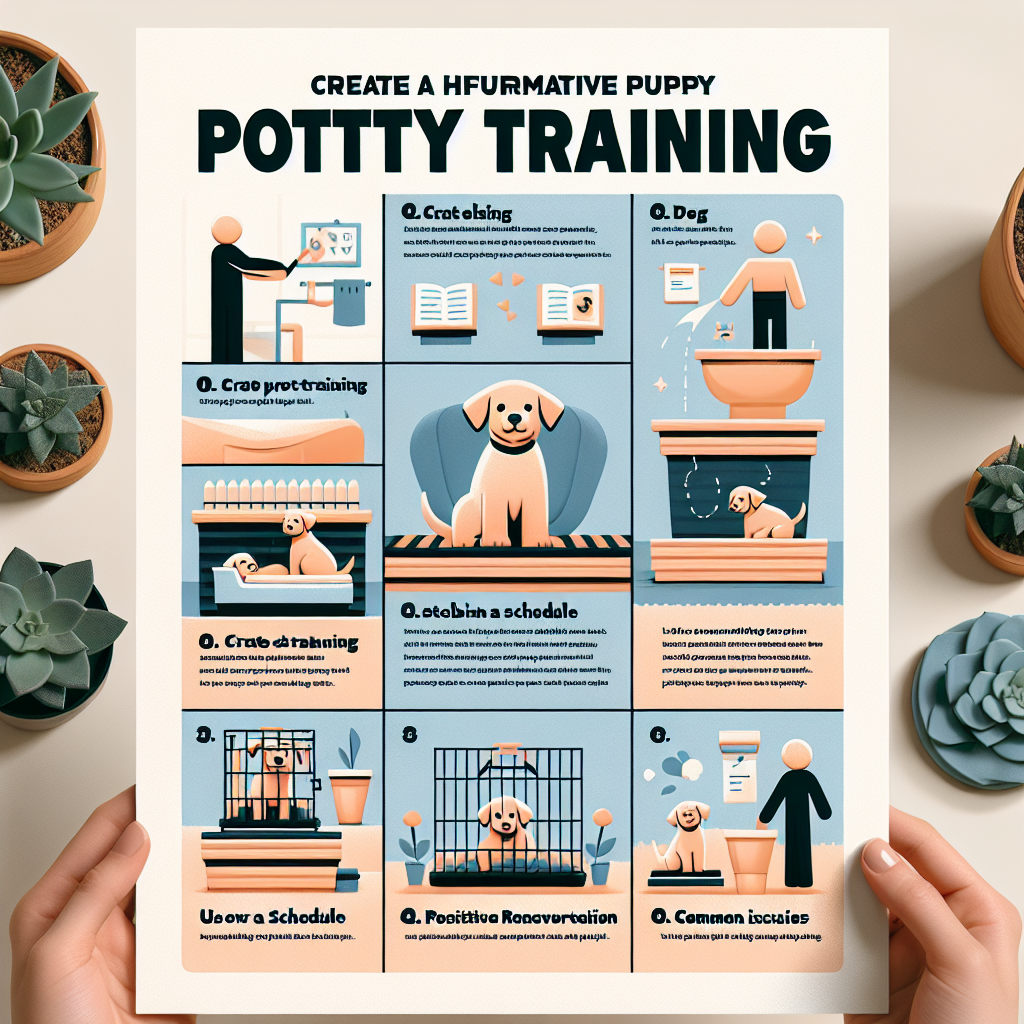Are you a new puppy owner in need of some guidance on how to potty train your furry friend? Look no further! This article will provide you with helpful tips and tricks to ensure a successful and stress-free potty training journey for both you and your adorable new companion. From establishing a routine to using positive reinforcement techniques, you’ll find everything you need to know to get your puppy on track to becoming a potty-trained superstar. Say goodbye to accidents and hello to a clean and happy household!

This image is property of images.unsplash.com.
Establish a Routine for your Puppy
Choose a designated potty area
When it comes to potty training your puppy, having a designated potty area is crucial. This area will serve as a consistent spot for your puppy to relieve themselves. Make sure to choose a location that is easily accessible and preferably has an outdoor space. By consistently bringing your puppy to the same spot, you will help them understand that this is their designated potty area.
Set a consistent schedule for potty breaks
Consistency is key when it comes to potty training your puppy. Set a schedule for regular potty breaks throughout the day. This will help your puppy learn when and where they should go to the bathroom. Plan for potty breaks first thing in the morning, after meals, and before bed. By sticking to a routine, your puppy will quickly understand when it’s time to go outside.
Take your puppy to the potty area immediately after waking up or eating
After your puppy wakes up from a nap or finishes a meal, it’s essential to take them to their designated potty area right away. These are common times when puppies need to relieve themselves. By promptly bringing them to the potty area, you prevent accidents from happening inside your home. Establishing this routine can make a significant difference in your puppy’s potty training success.
Understanding Your Puppy’s Signals
Observe your puppy’s body language
Paying attention to your puppy’s body language is crucial when it comes to understanding their signals for needing to go potty. Watch for signs such as pacing, sniffing the ground, or circling. These behaviors often indicate that your puppy needs to go outside. By familiarizing yourself with your puppy’s body language, you can anticipate their needs and take them to their designated potty area in a timely manner.
Look for signs of sniffing or circling
Sniffing and circling are two common behaviors that puppies exhibit when they need to go potty. If you notice your puppy sniffing the ground or walking in circles, it’s a clear indication that they need to relieve themselves. Be aware of these signs, and when you observe them, take your puppy to their designated potty area immediately.
Pay attention to excessive whining or barking
Another way that puppies may communicate their need to go potty is through excessive whining or barking. If your puppy suddenly becomes vocal or restless, it may be their way of letting you know that they need to go outside. Take these vocal cues seriously and respond by taking your puppy to their potty area promptly.
Encouraging Proper Elimination
Praise and rewards for successful potty breaks
Positive reinforcement is a powerful tool when it comes to potty training your puppy. Whenever your puppy successfully goes potty in their designated area, make sure to praise them enthusiastically. You can also offer a small treat or use a clicker to associate the action with a reward. This positive reinforcement helps to reinforce good potty habits and encourages your puppy to continue eliminating in the appropriate area.
Avoid punishment for accidents
Accidents happen, especially during the potty training process. It’s important to remember that punishment is not an effective method for teaching your puppy where they should go potty. Instead of scolding or punishing your puppy when accidents occur, focus on redirecting their behavior and reinforcing positive habits. Punishment can create fear and anxiety, which may hinder the potty training progress.
Use a command or cue for potty time
Using a specific command or cue for potty time can help your puppy understand what is expected of them. Choose a word or phrase that you consistently use when taking your puppy to their potty area, such as “go potty” or “do your business.” By using this command consistently, your puppy will begin to associate it with going potty, making the process more efficient and effective.
Managing Accidents
Clean up accidents immediately
When accidents happen, it’s important to clean them up promptly and thoroughly. Use a paper towel or cloth to soak up any urine and pick up any solid waste. Then, use an enzyme-based cleaner specifically designed for pet accidents to eliminate the odor. Regular household cleaners may mask the scent for humans but not for your puppy, potentially leading them to have more accidents in the same spot.
Use enzyme-based cleaners to remove odors
Enzyme-based cleaners are essential for effectively removing odors associated with puppy accidents. These cleaners contain enzymes that break down the organic compounds in urine and feces, eliminating the scent that can attract your puppy to repeat the behavior in the same area. Be sure to follow the instructions on the cleaner and thoroughly treat the affected area to prevent future accidents.
Refrain from scolding or yelling at your puppy
While it can be frustrating when accidents happen, it’s important to remember not to scold or yell at your puppy. Negative reinforcement can confuse and stress your puppy, making the potty training process more challenging. Instead, focus on redirecting their behavior and reinforcing proper elimination habits. Stay calm and patient with your puppy as accidents are a normal part of the learning process.

This image is property of images.unsplash.com.
Crate Training for Potty Training
Choose an appropriately sized crate
Crate training can be a valuable tool for potty training your puppy. However, it’s important to choose a crate that is appropriately sized. The crate should be large enough for your puppy to stand up, turn around, and lie down comfortably. If the crate is too big, your puppy may be more inclined to eliminate inside it. Conversely, if the crate is too small, your puppy may become uncomfortable and have accidents due to lack of space.
Introduce your puppy to the crate gradually
Introducing your puppy to the crate gradually is essential for their comfort and success with crate training. Start by placing the crate in a quiet area of your home and leaving the door open. Allow your puppy to explore the crate at their own pace and provide positive reinforcement when they show interest or enter the crate voluntarily. Gradually increase the amount of time your puppy spends in the crate, always associating it with positive experiences.
Use the crate for short periods of time
When starting crate training, it’s important to begin with short periods of time. This allows your puppy to adjust to being confined without becoming anxious or distressed. Start with just a few minutes and gradually increase the duration as your puppy becomes more comfortable. Additionally, ensure that your puppy has had an opportunity to eliminate before being placed in the crate, reducing the likelihood of accidents.
Supervision and Confinement
Keep a close eye on your puppy
Supervision is crucial during the potty training process. Keep a close eye on your puppy, especially when they are not in the crate or confined area. By monitoring their behavior, you can quickly recognize when they need to go outside and prevent accidents from occurring. Use this time to reinforce their routine and guide them to their designated potty area.
Use baby gates or playpens to restrict access
To prevent accidents and keep your puppy contained, consider using baby gates or playpens to restrict their access to certain areas of your home. This allows you to supervise your puppy more easily and prevents them from wandering off to eliminate in inappropriate places. Gradually expand their access to more areas of the house as they become more reliable in their potty training.
Tether your puppy to you when indoors
Tethering your puppy to you when indoors is another effective method for supervision and confinement. By attaching a leash or tether to a belt loop or waistband, you can keep your puppy close and prevent them from having accidents out of sight. This also allows you to closely monitor their behavior and quickly respond to any signs that they need to go outside.

This image is property of images.unsplash.com.
Patience and Consistency
Understand that accidents are part of the process
During the potty training process, it’s important to have realistic expectations and understand that accidents are part of the learning process. Puppies have small bladders and may not have full control over their elimination functions yet. Stay patient and consistent with your training methods, and remember that your puppy is trying their best to learn and please you.
Consistently follow the established routine
Consistency is crucial when it comes to potty training your puppy successfully. Follow the established routine of scheduled potty breaks, taking your puppy to the designated potty area after waking up or eating, and using the command or cue for potty time. By consistently following the routine, you provide structure and clear expectations for your puppy, making the learning process easier for them.
Don’t rush or get frustrated
Potty training takes time and patience. It’s important not to rush or get frustrated with your puppy. Remember that accidents are part of the learning process and that your puppy is trying their best to understand what is expected of them. Stay positive, use positive reinforcement, and remain patient throughout the potty training journey. Your puppy will eventually grasp the concept with your consistent guidance.
Preventing Future Accidents
Continue the routine even after successful potty training
Even after your puppy has successfully learned to go potty in their designated area, it’s important to continue the established routine. Dogs thrive on consistency, and maintaining the routine helps reinforce good habits and prevents regression. Consistently taking your dog outside at the designated times and using the command or cue for potty time will help solidify their potty training skills.
Gradually increase the puppy’s access to more areas
As your puppy becomes more reliable in their potty training, gradually increase their access to more areas of your home. Start expanding their boundaries, allowing them supervised access to new rooms while still being vigilant for any signs of potential accidents. This gradual expansion helps your puppy build confidence and reinforces good habits in different areas of the house.
Supervise and reinforce good potty habits
Ongoing supervision is essential to ensure that good potty habits are reinforced. Continue to closely monitor your puppy’s behavior and provide positive reinforcement for using their designated potty area. By reinforcing good habits, you help solidify their understanding that this is the appropriate place to eliminate and encourage them to continue doing so.

Dealing with Regression
Identify the underlying cause of regression
Sometimes, even well-trained puppies may experience regression and have accidents. It’s important to identify the underlying cause of regression to address the issue effectively. Possible causes of regression include changes in routine, illness, stress, or unfamiliar surroundings. By understanding the reason behind the regression, you can make necessary adjustments to help your puppy regain their potty training progress.
Return to a stricter routine temporarily
When experiencing regression, it may be necessary to return to a stricter routine temporarily. By reinforcing the established routine and providing consistent guidance, you can help your puppy regain their potty training skills. Monitor their behavior closely and address any signs that they need to go potty promptly. With time and consistent training, your puppy will likely overcome the regression phase.
Consult with a professional if necessary
If you find that your puppy’s potty training regression persists or is accompanied by other behavioral issues, it may be helpful to consult with a professional dog trainer or veterinarian. They can assess the situation and provide guidance tailored to your puppy’s specific needs. Professional assistance can offer valuable insights and strategies to address any underlying issues contributing to the regression.
Final Tips for Successful Potty Training
Keep a record of your puppy’s potty breaks
Keeping a record of your puppy’s potty breaks can help you identify patterns and improve your potty training routine. Note the times your puppy eliminates and any relevant information, such as accidents or successful potty breaks, in a journal or on a calendar. This record can serve as a helpful reference and aid in adjusting the potty training routine as needed.
Stay positive and patient throughout the process
Maintaining a positive and patient attitude is crucial throughout the potty training process. Your puppy looks to you for guidance and relies on your positive reinforcement to understand what is expected of them. Celebrate their successes and remain patient during setbacks. With a positive and patient approach, you can create a positive training environment and help your puppy learn effectively.
Seek professional help if struggling
If you find yourself struggling with potty training your puppy, don’t hesitate to seek professional help. A professional dog trainer or veterinarian can provide expert guidance tailored to your specific situation. They can address any challenges or concerns you may have and offer techniques and strategies to overcome them. Professional assistance can greatly enhance your potty training journey and ensure long-term success.